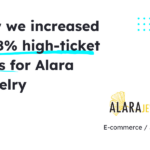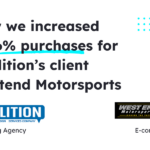
Introduction
Having a landing page is an essential component of any B2B marketing strategy today. A well-designed landing page can make or break your conversion rates, which ultimately translates into revenue for your business. So optimizing your landing page for conversions is crucial to maximizing the return on your marketing investment. In this article, we’ll explore the key elements of a successful B2B landing page and provide you with actionable tips on how to create a landing page that converts visitors into customers. Whether you’re a seasoned marketer or just starting out, this post will help you craft a landing page that resonates with your target audience and drives results for your business.
Increase +180%
leads
demos
sales
bookings
from your website with AI
Get more conversions from your existing website traffic delivering personalized experiences.
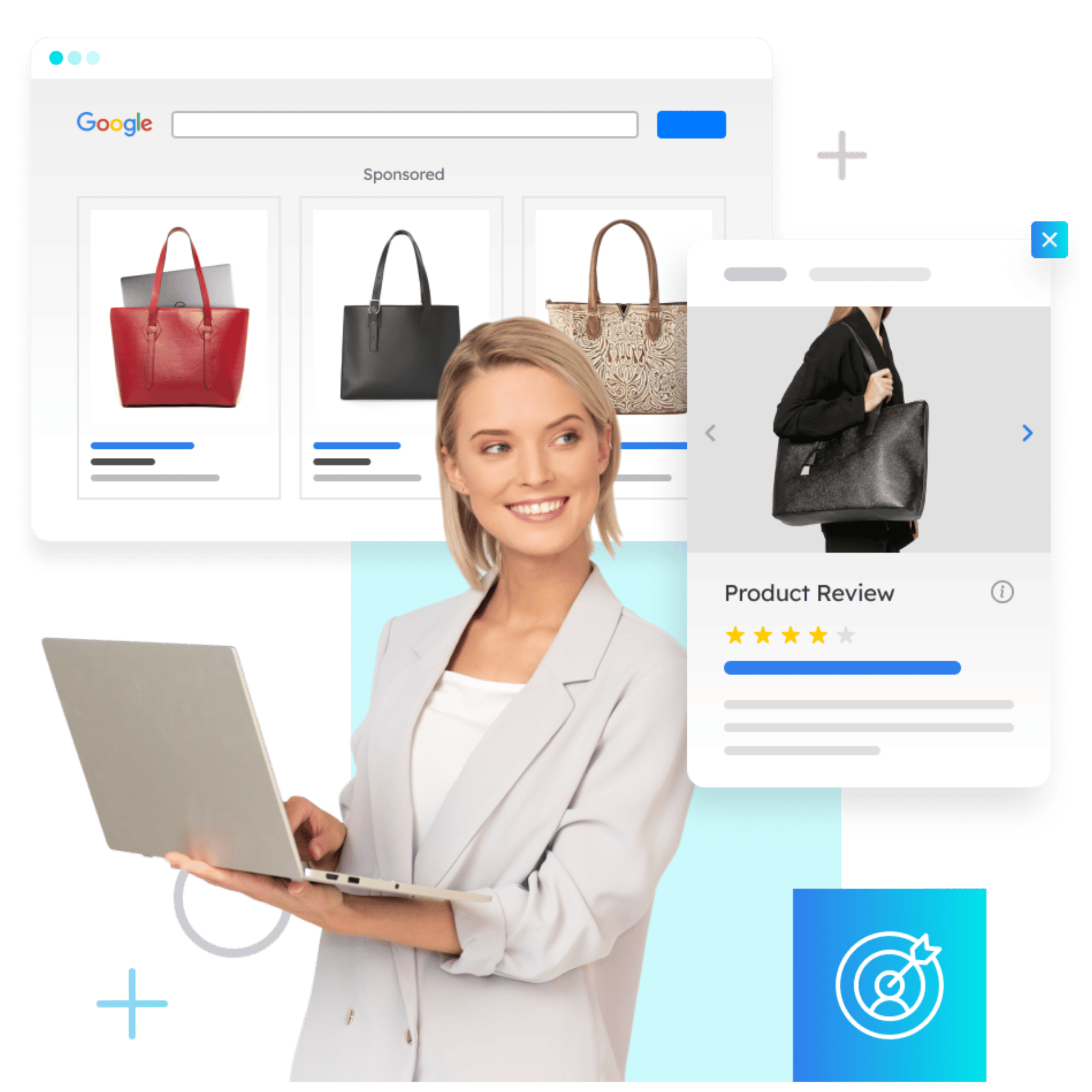
The Importance of a B2B Landing Page
In the context of B2B marketing, landing pages are an essential component of the lead generation process. B2B companies typically use landing pages to capture leads by offering a valuable resource in exchange for contact information, such as personalized demos, industry whitepapers, ebooks, templates, access to webinars, events, etc.
Here are a few reasons why landing pages are a key component in B2B marketing strategies:
- Improved Conversion Rates: By creating a focused, targeted page that is designed to drive a specific action, landing pages are often more effective at converting visitors into leads or customers than a general website page.
- Better Lead Quality: Because landing pages are designed to target a specific audience and offer a specific value proposition, the leads generated from landing pages are often more qualified and more likely to become customers.
- Enhanced Tracking and Analytics: Landing pages allow for better tracking of campaign performance and can provide insights into which channels and messages are most effective in driving conversions.
By acknowledging the above and recognizing the potential, it’s easy to understand how vital it is to optimize your landing page for a successful B2B marketing strategy.
Checklist: How Can You Optimize a B2B Landing Page?
There are several ways to optimize a B2B landing page to increase your conversion rate. Here are key aspects to keep in mind:
- Focus on Your Value Proposition
Make sure your landing page clearly communicates your unique value proposition and how your product or service can solve your customer’s problem. Use persuasive language that highlights the benefits of your offering and how it can make a difference for your customer. We don’t want our customers to feel confused or wonder what they get out of this product or solution.
- Simple Structure and Content
Keep your landing page design and copy simple and focused. Avoid clutter and distractions that can confuse or overwhelm visitors. Use clear and concise messaging that guides visitors toward the call to action.
- Use a Strong Call-to-Action
Your call-to-action (CTA) should be prominently displayed and it should clearly communicate what action you want the visitor to take. Use action-oriented language and ensure that the CTA is easy to find on the page.
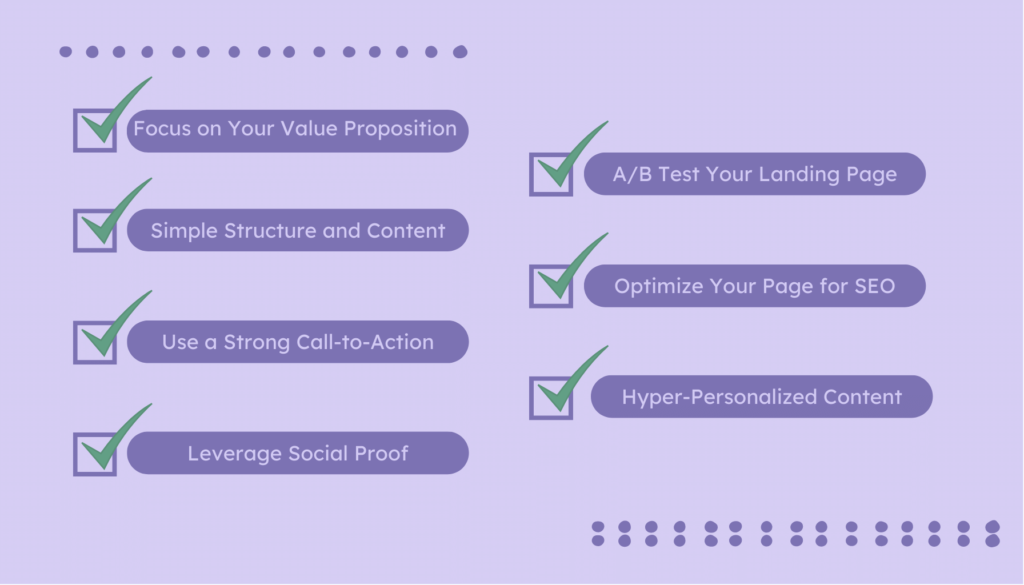
- Leverage Social Proof
Including social proof such as customer testimonials, case studies, or trust badges can help build credibility and trust with your visitors. Use real-world examples that demonstrate the effectiveness of your product or service.
- A/B Test Your Landing Page
Test different variations of your page to see which performs best. Experiment with different headlines, copy, images, and CTAs to see what resonates best with your target audience.
- Optimize Your Landing Page for SEO
Make sure your page is optimized for search engines by including relevant keywords in your copy and meta tags. This will help drive organic traffic to your page.
- Offer Hyper-Personalized Content Based on Your Users’ Intent
Tailor your messaging to the specific needs and interests of your target audience. With the help of AI and machine learning, you can analyze user behavior, preferences, and intent to deliver highly targeted content that speaks directly to their needs and pain points.
Let’s dive deeper into each one of these optimization strategies.
1. Focus on Your Value Proposition
Focusing on your value proposition is essential when creating a B2B landing page that converts. A value proposition is a statement that clearly communicates the unique benefits that your product or service offers to your customers. It’s the reason why your customers should choose you over your competitors.
Here are some ideas for crafting a compelling value proposition that will help you optimize your B2B landing page:
- Understand Your Customers: To create an effective value proposition, you need to have a deep understanding of your target audience. This includes their pain points, challenges, and goals. Conduct market research to gather insights into what motivates your customers and what they’re looking for in a solution.
- Identify Your Unique Selling Proposition: Once you understand your customers, it’s time to identify your unique selling proposition (USP). This is the thing that sets you apart from your competitors and makes your offering unique. Your USP should be based on the benefits that you offer to your customers, not just the features of your product or service. Keep your customer at the center of all messaging and copy.
- Communicate Benefits, Not Features: Your value proposition should communicate the benefits that your customers will receive from using your product or service, not just the features. Focus on the outcomes that your customers will achieve, such as increased productivity, cost savings, or improved customer satisfaction.
- Use Persuasive Language: Use persuasive language to communicate your value proposition. These power words evoke emotions and inspire action. For example, instead of saying ‘Our software can help you save time’, say ‘Streamline your workflow and save hours every week with our powerful software.’
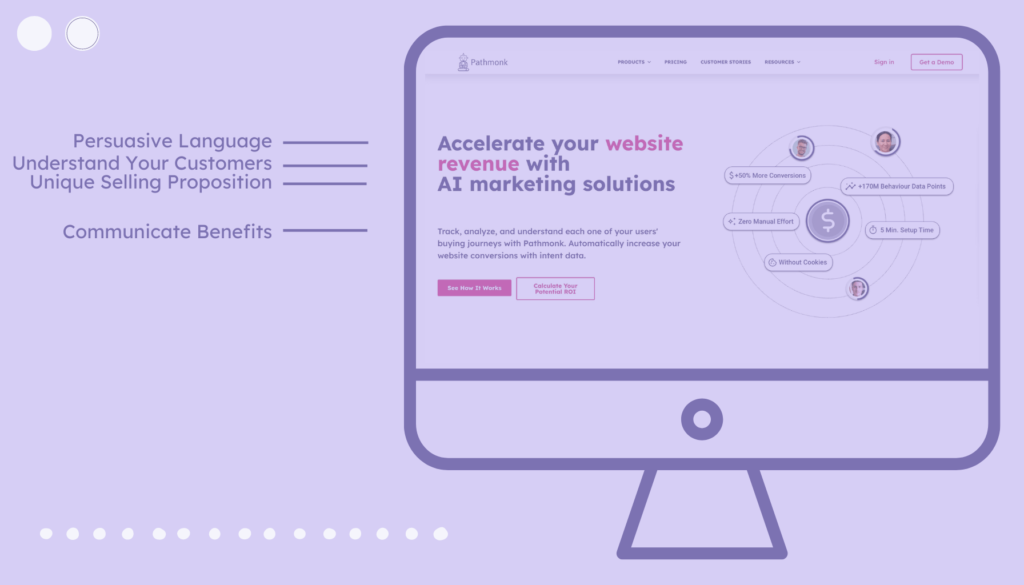
2. Simple Structure and Content
Keeping your B2B landing page simple is crucial to its success. Those that visit your landing page should be able to quickly understand your value proposition, the benefits of your product or service, and what action they need to take next.
Here are some UX and copywriting best practices to help you simplify your B2B landing page:
- Use Clear and Concise Headlines: Your headline should clearly communicate the key benefit of your offering and grab the visitor’s attention. Use simple and straightforward language that is easy to understand. There’s no need to overcomplicate the headlines with smart vocabulary.
- Minimize Distractions: Remove any unnecessary elements from your landing page that may distract or confuse visitors. Use a minimalist design that guides visitors toward the call-to-action (CTA) without overwhelming them.
- Use Whitespace: Whitespace is the empty space between design elements on your landing page. Using whitespace effectively can make your page feel less cluttered and more visually appealing, improving the user experience.
- Use Easy-To-Read Fonts: Choose fonts that are easy to read and consistent with your brand. Avoid using too many different fonts or font sizes, which can make your landing page look unprofessional and cluttered.
- Keep Your Copy Concise: Use short paragraphs and bullet points to break up your copy and make it easier to read. Use simple language that is easy to understand. Avoid jargon or technical terms that may confuse visitors.
- Use High-Quality Images: Use images that support your value proposition and help illustrate the benefits of your product or service. Avoid using generic stock photos that may look out of place or unprofessional.
3. Use a Strong Call-to-Action
A strong and well-designed CTA can make all the difference between a visitor who leaves and one who converts.
In fact, studies show that a compelling CTA can increase conversions by up to 80%, while a poorly designed or unclear CTA can cause visitors to abandon your page without taking any action. Whether you’re asking visitors to sign up for a free trial, schedule a demo, or download a white paper, it’s essential to use a strong CTA on your landing page that is designed to stand out and entice visitors to take action.
Here are some ideas for creating a compelling CTA on your B2B landing page:
- Make Your CTA Stand Out: Your CTA should be prominently displayed and stand out visually from the rest of your landing page. Use a contrasting color or button style to draw the visitor’s attention.
- Use Action-Oriented Language: Action-oriented language in your CTA can clearly communicate what action you want the visitor to take. For example, ‘Sign up now’, ‘Get started’, or ‘Download our free guide’.
- Create Urgency: Creating a sense of urgency can help motivate visitors to take action. Use language that communicates a deadline or limited availability, such as ‘Limited time offer’, or ‘Only a few spots left’.
- Use Personalization: Personalizing your CTA based on the visitor’s behavior or interests can increase its effectiveness. For example, if the visitor has already downloaded a guide, your CTA could say ‘Take your learning to the next level with our advanced guide.’
- Test Different CTAs: A/B testing different CTAs can help you determine which one is most effective at converting visitors into leads or customers. Try testing different messaging, button styles, and placements to see what works best.
- Optimize for Mobile: With the increasing use of mobile devices, it’s essential to ensure that your CTA is optimized for mobile users. Make sure that the button is large enough and easy to tap on a mobile screen.
4. Social Proof
Leveraging social proof on your B2B landing page is an effective way to build trust with potential customers and increase conversions. Social proof refers to the psychological phenomenon where people are influenced by the actions and opinions of others. By showcasing positive feedback from satisfied customers or reputable industry publications, you can help convince potential customers that your product or service is trustworthy and valuable.
How can you leverage social proof on your B2B landing page?
- Customer Reviews and Testimonials: Displaying customer reviews and testimonials is one of the most effective ways to leverage social proof. Positive reviews from satisfied customers can help build trust and credibility with potential customers. Displaying reviews and testimonials prominently on your landing page can also help potential customers quickly understand the benefits of your product or service.
- Case Studies: Sharing case studies that showcase the results your product or service has achieved for previous clients can be a powerful form of social proof. Case studies provide concrete examples of how your product or service has helped others achieve their goals, which can help potential customers envision how your product or service can benefit them.
- Endorsements and Awards: Displaying endorsements or awards from reputable industry publications or influencers can also help build trust and credibility with potential customers. Endorsements from recognized thought leaders or industry experts can position your product or service as a leader in your industry.
- Social Media: Highlighting your social media following or social media mentions can also be a form of social proof. Displaying social media icons or follower counts, can showcase the popularity of your brand and build trust with potential customers.
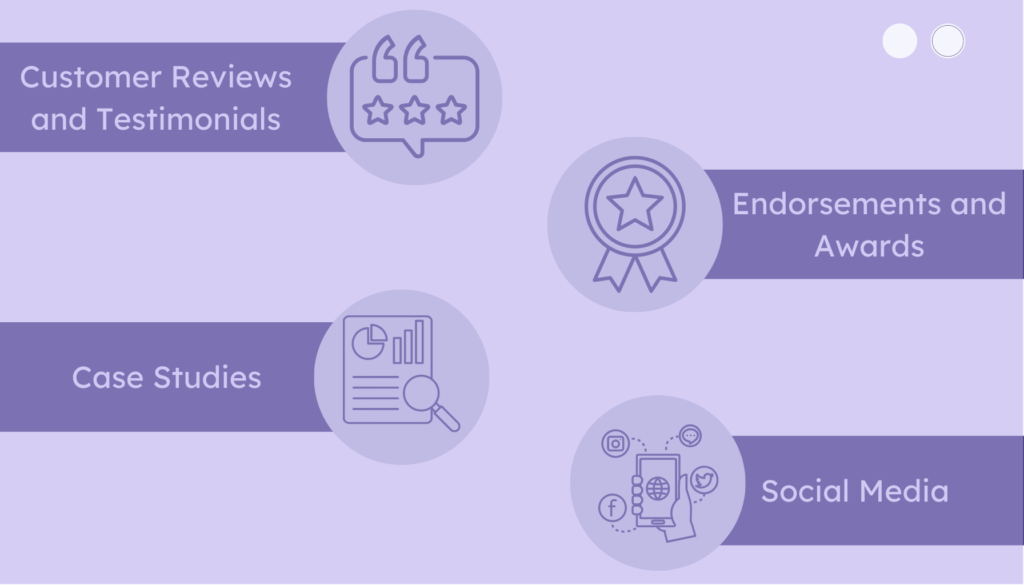
5. A/B Test Your Landing Page
A/B testing, also known as split testing, is a critical step in optimizing your B2B landing page for conversions. A/B testing involves creating two or more versions of your landing page and testing them against each other to see which one performs better. By making incremental changes and comparing the results, you can optimize your landing page for maximum conversions.
Here are some tips for A/B testing your landing page:
- Start With a Clear Hypothesis: Before you start A/B testing, it’s important to have a clear hypothesis of what you want to test and what you hope to achieve. For example, you might hypothesize that changing the color of your CTA button will increase conversions. Having a clear hypothesis will help you create focused A/B tests and make it easier to interpret the results.
- Test One Variable at a Time: To accurately measure the impact of each change, it’s essential to test one variable at a time. For example, if you want to test the impact of changing your CTA button color, you should only change the button color in one version of your landing page, while keeping all other elements the same.
- Use Statistical Significance: It’s important to use statistical significance to determine if your results are meaningful. Statistical significance is a measure of how likely your results are due to change. Generally, a significance level of 95% or higher is considered statistically significant.
- Test for Mobile Optimization: We’re living in an age of convenience so with the increasing number of people accessing the internet on their mobile devices, it’s essential to test your landing page’s mobile optimization. This includes testing the page’s load time, layout, and readability on different mobile devices.
- Test Different Layouts: Testing different layouts can be an effective way to improve the overall user experience and increase conversions. For example, you might test the impact of having a longer or shorter landing page, changing the order of the elements, or adjusting the size of your images.
- Test Your Copy: The copy on your landing page can have a significant impact on conversions. Testing different headlines, subheadings, and CTAs can help you find the most effective messaging for your audience.
- Don’t Stop Testing: A/B testing is an ongoing process, and you should continue to test and optimize your landing page over time. As your audience and marketing goals change, you may need to adjust your landing page accordingly.
Free template: CRO audit checklist
Discover everything you need to start identifying drop-offs and increase conversions.
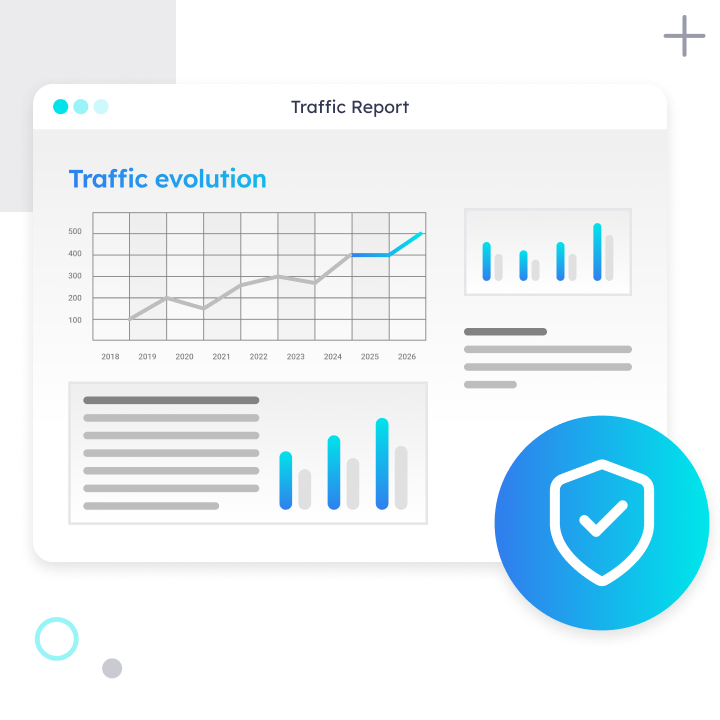
6. Optimize Your Landing Page for SEO
When it comes to B2B marketing, optimizing your landing page for search engine optimization (SEO) can mean the difference between success and failure. A well-optimized landing page can improve your visibility in search results, drive more traffic to your site, and ultimately increase conversions.
By following the tips outlined below, you can create a landing page that not only meets the needs of your target audience but also performs well in search results.
- Conduct Keyword Research: Before creating your landing page, it’s important to conduct keyword research to determine what keywords and phrases your target audience is searching for. Use tools like Google Keyword Planner, SEMrush, or Ahrefs to identify relevant keywords with high search volume and low competition.
- Optimize Your Headlines: For SEO, your headlines are one of the most important elements of your landing page. Use your primary keywords in your headline and keep it under 70 characters to ensure it displays properly in search results.
- Optimize Your Meta Tags: Meta tags, including the title tag and meta description, are used by search engines to understand the content of your landing page. Use your primary keyword in your title tag and keep it under 60 characters. Your meta description should be under 155 characters and include your primary keyword, as well as a compelling call-to-action to entice users to click.
- Use Internal Linking: Internal linking is the practice of linking to other pages on your website within your landing page. This can improve the overall SEO of your website by spreading link equity and helping search engines understand the structure of your site. Link to relevant pages within your site, including blog posts, product pages, and other landing pages.
- Optimize Your Images: Optimize your images for SEO by using descriptive filenames and alt text that includes your primary keyword. This can improve your page’s relevance and visibility in image search results.
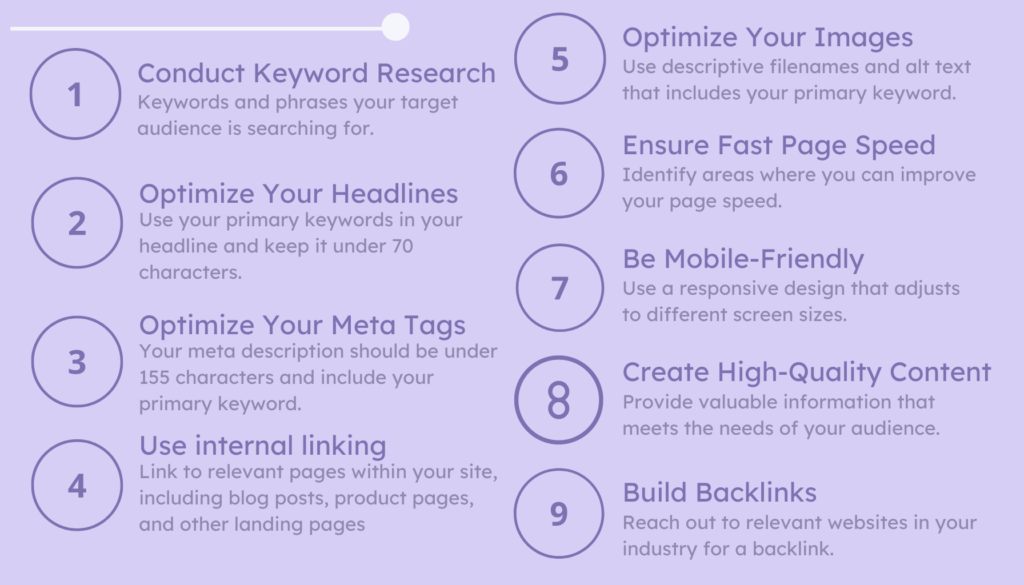
- Ensure Fast Page Speed: Page speed is a crucial factor in both user experience and SEO. Use tools like Google PageSpeed Insights to identify areas where you can improve your page speed, such as compressing images, minifying code, and leveraging browser caching.
- Make Your Landing Page Mobile-Friendly: With the increasing number of people accessing the internet on their mobile devices, it’s essential to ensure your landing page is optimized for mobile. Use a responsive design that adjusts to different screen sizes, and ensure that your page loads quickly on mobile devices.
- Create High-Quality Content: Creating high-quality, relevant content is essential for SEO. Use your primary keywords throughout your content, but avoid keyword stuffing. Focus on providing valuable information that meets the needs of your target audience.
- Build Backlinks: Backlinks are links from other websites that lead to your landing page. Building high-quality backlinks can improve your page’s authority and visibility in search results. Reach out to relevant websites in your industry and offer to guest post or provide valuable content in exchange for a backlink.
7. Offer Hyper-Personalized Content Based on Your Users’ Intent
Tailor your messaging to the specific needs and interests of your target audience. With the help of AI and machine learning, you can analyze user behavior, preferences, and intent to deliver highly targeted content that speaks directly to their needs and pain points.
One effective way to achieve this is by using dynamic, hyper-relevant content on your landing page. By tracking user behavior and personalizing content based on their actions, you can create a more engaging user experience. For example, if a user clicks on a specific product or service, you can show them more information about that offering, along with related content and calls to action.
Another effective strategy is to use retargeting campaigns to reach users who have already engaged with your brand. By showing them personalized ads and landing pages that reflect their previous interactions with your site, you can increase the chances of them converting into paying customers.
Ultimately, hyper-personalization is all about delivering the right message to the right person at the right time. By using AI and machine learning to analyze user data and behavior, you can create a highly tailored landing page experience that meets the specific needs and interests of your target audience. This, in turn, can lead to higher conversion rates, increased customer satisfaction, and ultimately, greater business success.
Conclusion
Optimizing your B2B landing page is an ongoing process that requires careful planning, testing, and analysis. From crafting a compelling value proposition to optimizing for SEO to leveraging AI-driven personalization tools to following the strategies and best practices outlined in this guide, you can create a landing page that not only meets the needs of your target audience but also drives more conversions and contributes to the long-term success of your business.
Increase +180%
leads
demos
sales
bookings
from your website with AI
Get more conversions from your existing website traffic delivering personalized experiences.


